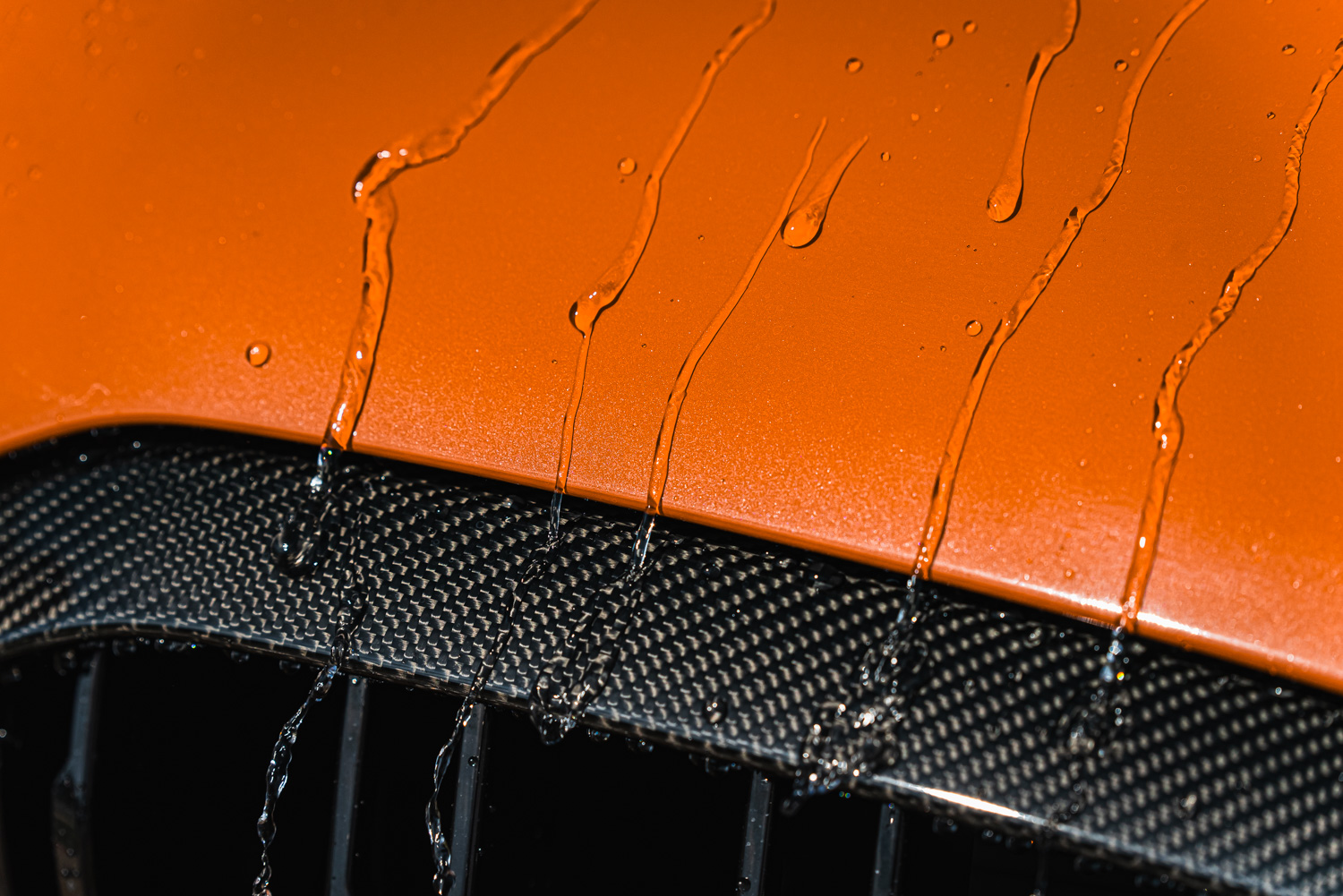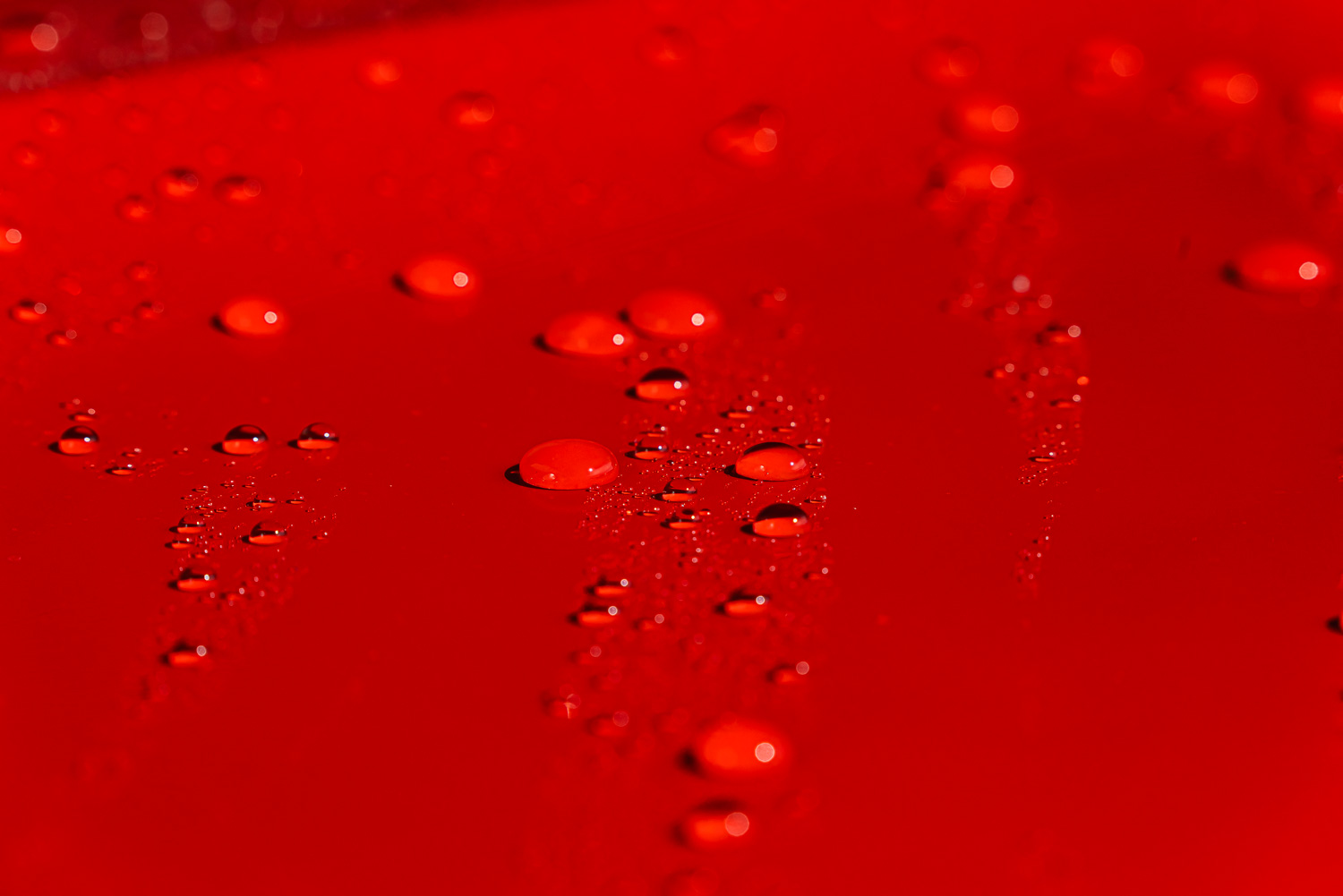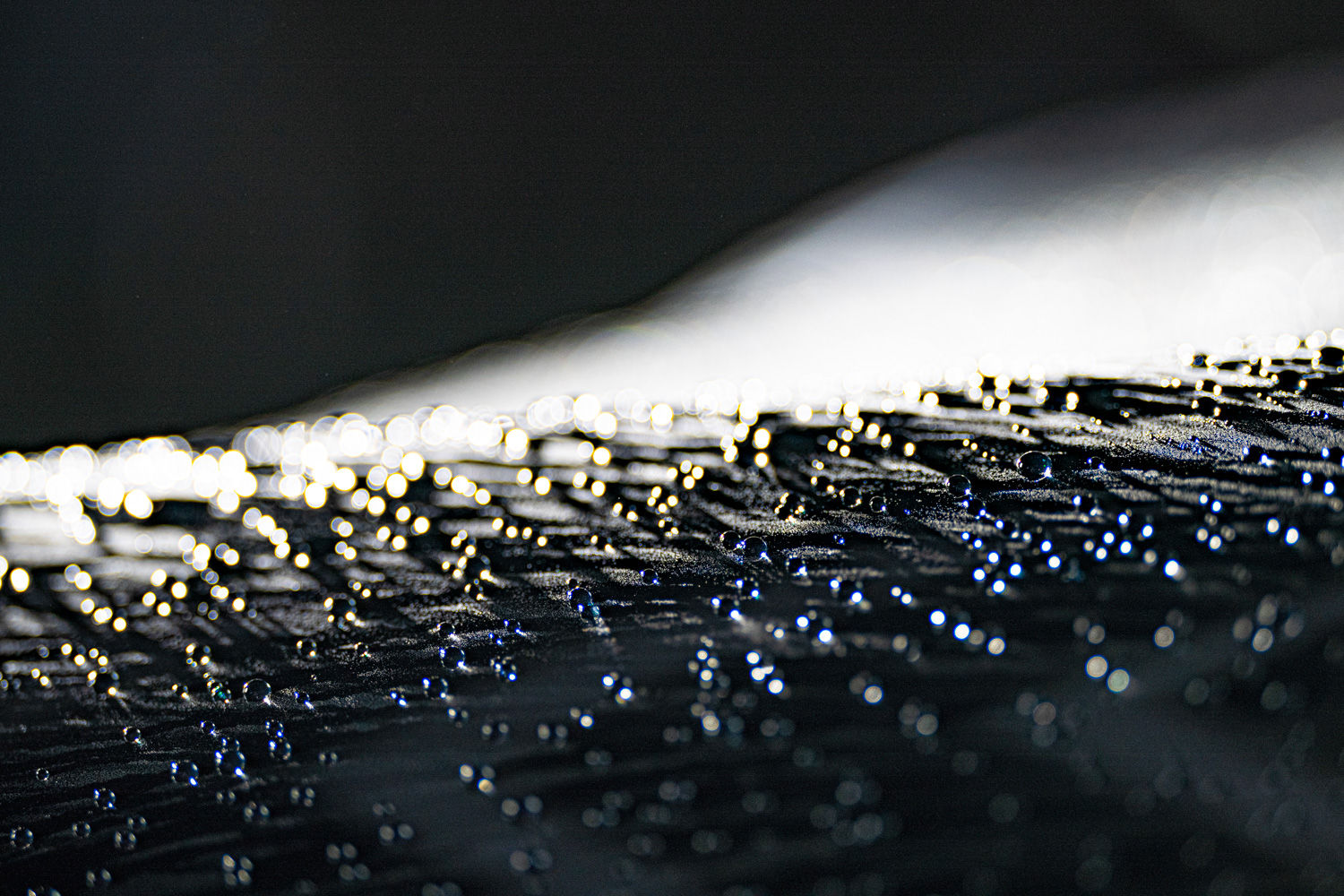-
Ceramic Coatings
-
Shop
-
About
Ceramic coatings are often marketed as being “self-healing” or “hydrophobic,” but to someone just starting to learn about aftermarket automotive products, it may not be self-evident why these things are important. In this blog we’ll break down the science behind hydrophobicity, explain why it’s important for automotive products, and things to look for when you’re searching for a hydrophobic coating.

The term hydrophobic is used to describe something that rejects or repels water.
When thinking about hydrophobic surfaces, it’s helpful to understand contact angle. Contact angle is a measure of how far water can spread on a surface. You can find the contact angle of any surface with careful measurement and observation; Simply measure the angle between the surface of a drop of liquid and the surface it’s resting on. The lower the angle, the more the liquid can spread.
Scientists use contact angle measurements to classify surfaces and their relationship to liquid. Anything at a 90 contact angle or higher is technically hydrophobic. There are other designations based on contact angle too. For example, a 0 contact angle is referred to as “perfect wetting” where liquid is free to cover the entire surface, while a 150 contact angle is referred to as “super-hydrophobic,” because almost no water is touching the surface. We’ll be coming back to the term super-hydrophobic later on.
Many natural substances are hydrophobic. For example, butterfly wings have a contact angle of around 130, while duck feathers are super hydrophobic at a 150 contact angle, and rose petals go even further with an angle of 160. Even your skin is technically hydrophobic with a contact angle of 90. The ways these surfaces achieve hydrophobicity is diverse and incredibly interesting, but the case that most interests us is hydrophobicity in ceramic coatings.


Ceramic coatings and other hydrophobic automotive products typically achieve hydrophobicity in one of three ways: lack of surface roughness, chemical water repellency, or rare-earth dioxide infusions.
The most common way to introduce hydrophobic properties to a surface is to level it, so water has less of a surface to grab on to. Paint, even factory-fresh automotive paint, is filled with completely normal, very very small pores, ridges, pits, and valleys. You can think of these inconsistencies as giving water handholds and footholds, places to hang on to your paint. To make your vehicle hydrophobic, we need to eliminate those.

Every drop of ceramic coating contains billions of ceramic nano-particles, which when the coating is applied, filter into the microscopic inconsistencies in your paint. These particles quickly self-level and then harden in-place, creating a much smoother surface and eliminating places where water can hang onto the paint.
Simply leveling the paint often returns good results, but higher end coatings employ two more hydrophobic methods in order to maximize performance. The first is chemical water repellency. Some chemicals are simply incompatible with water, and can be mixed into coatings in order to repel water. However, most of these compounds diffuse poorly and lose their hydrophobicity over time. That’s why higher-end brands use the rare-earth dioxide method.
The least common way to create a hydrophobic ceramic coating is to combine the Si02 with rare-earth dioxides like Titanium Dioxide. These substances refuse to mix with water at all due to the unique structure of their electrons, and can lend extreme hydrophobicity to the entire mixture when diffused correctly.
Fireball’s ceramic coatings combine the first method, self-leveling silica, with the rare-earth dioxide method, to create coatings with contact angles exceeding 150 – but why go to all that trouble? Now that we have a working understanding of the science behind hydrophobicity, let’s get into why automotive enthusiasts want their car to be hydrophobic in the first place.
Hydrophobicity offers many benefits for car owners, including what some companies call “self-cleaning” properties. You can find lots of lists of benefits of ceramic coatings online with features like “anti-icing,” “anti-corrosion,” “graffiti resistant,” “anti-weathering,” “chemically resistant,” “anti mineral build-up,” and so on. The truth is, rather than being separate features, these are all benefits of having hydrophobic and super-hydrophobic surfaces.
Many of the hazards listed – weathering, mineral build-up, icing, corrosion – are primarily caused by a surface’s prolonged exposure to water. For example, mineral build-up is most commonly caused by heavy rain or snow. When rain or snow containing trace minerals is allowed to sit on a surface for prolonged amounts of time, the minerals settle onto the surface and become hard to remove. The same thing happens when sea salt, chemical fallout, or even spray paint try to attach to your vehicle; harmful substances are carried via liquid, and come to rest on a surface for long enough to do significant lasting damage. All of this is much less of an issue when the surface in question is hydrophobic.
What about this “self-cleaning” phrase? This is also a byproduct of hydrophobicity. Because much of the dirt and dust cars accumulate is initially contacted through rain, mud splashes, or similar, the act of preventing that dirt from sticking in the first place is counted as “self-cleaning” by some companies. However, coatings with super-hydrophobic contact angles have a better claim to the term. With super-hydrophobicity, any dirt, dust, or grease that does manage to stick to your car will bead, just like liquid. These contaminants then roll off harmlessly at your next wash, instead of sticking close to the paint and causing ugly scratches when you try to wash them off.
Side effects of the process of creating hydrophobicity can also have positive effects as well. For example, many coatings advertise being “scratch resistant,” which is a by-product of how the ceramic particles harden once applied.




If you’ve stuck around this long, you probably have an idea of what you want from a hydrophobic protective product. To summarize, we at Fireball believe these three factors are the most important when it comes to hydrophobicity:
As you’ve probably guessed, Fireball’s coatings fulfill these requirements. All of our coatings have portions diffused of titanium dioxide, and even our least hydrophobic coating achieves the scientific threshold for scientific hydrophobicity.
Since ceramic coatings are highly specialized protective agents, installations by untrained providers tend to fail. In order to have a properly installed coating, it’s best to look for a detailer who is certified and factory-trained in ceramic coating Installation. You can find a list of trainees who have been certified through Fireball’s in-house program, Fireball Academy.
Hydrophobicity isn’t the only factor to consider when choosing a coating. Some of the big factors that change by coating are lifespan, heat resistance, scratch resistance, compatibility with other car-care products, and applicable coverage area (interior vs exterior, etc.). It’s best to talk with a certified coatings installer about the best ceramic coating package for you based on the kinds of challenges your vehicle faces.
We’ve gone over what hydrophobicity is, how ceramic coatings accomplish it, why automotive enthusiasts want it, and how to choose the right coating for you. Hydrophobicity is a great way to protect your car’s paint and keep it looking its best. If you’re looking for a way to make your car easier to clean and keep roadside contaminants from damaging your paint, a ceramic coating is a great option. Just be sure to choose the right coating for your needs and have it installed by a certified professional.
